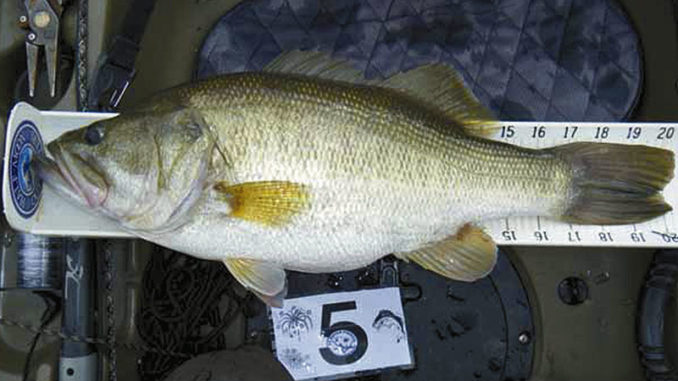
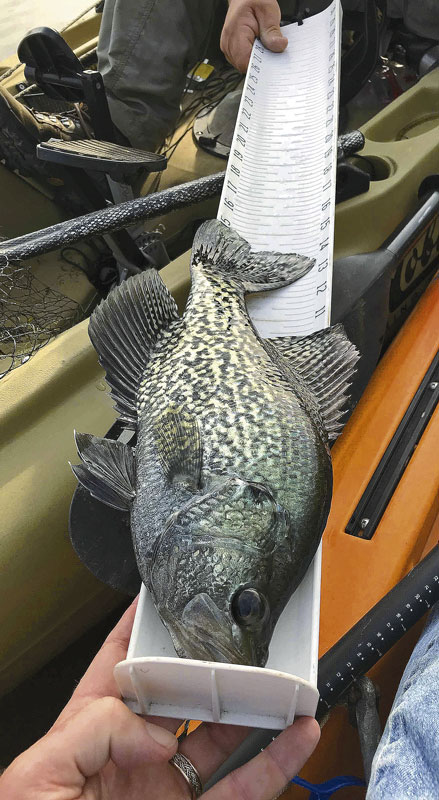
Technology advances making competitions easier to hold
Competition is a natural part of any sport. It’s a desire to see who has the better skills on a given day. Kayak fishing is no different. And with years of fishing tournaments and competitions to draw from, it’s only natural that kayak anglers would want to compete.
The question then becomes how to measure success. In a typical tournament, anglers would preserve their catch and transport it, preferably alive, to see who had accumulated the most fish. Or, more likely, who had caught the biggest.
One of the tenants of kayak fishing is the utilitarian approach: only taking along the bare minimum of what you need. The vast majority of the time, this means no livewell or other means to keep and transport caught fish.
When the modern age of kayak fishing first began to take off around 1990, tournaments experimented with anglers weighing only one fish. But anglers still had the burden of retaining the fish until the weigh-in.
The advent of digital photography offered kayak anglers the ability to record the catch and show the results immediately. As digital photography evolved into smaller, highly portable and even waterproof cameras, it made the process much easier.
Measuring up
Since calibrated scales are difficult to level with every event, it became apparent that the length of the catch would be the determining factor in giving it value. Anglers could lay their catch on a ruler, with both ends of the fish visible in the photograph. Then a tournament official would determine the official length.
Rulers were not a new thing as kayak tournaments took hold. Anglers often used metal rulers to measure their catch for their own information. And also to ensure compliance with any minimum-size or slot limits imposed by wildlife agencies on a state or local level.
The photographic aspect presented a couple of challenges. If a tournament were held during a particular time frame or on a particular body of water, it would be easy for an unscrupulous contestant to have photos of large fish previously caught ready to enter the catch.
Tournament directors responded by issuing identifiers just before or at the beginning of tournaments. They were as simple as a playing card or logo that must be included in the photograph to validate the time the fish was caught. Later, it became common for tournaments to use a word or random code as an identifier. The angler could either write the code on his/her hand or otherwise mark it where it would be visible in the photograph.
Time factor limit
Fish can be preserved on “film” much longer than they can be kept alive in a livewell. So, many kayak tournament formats have moved from single day events to week-long, month-long or even year-long competitions.
Rather than having an official gathering where anglers stand around waiting to see who caught the biggest fish, photographs are uploaded to tournament sites or to a tournament director who keeps tally of inches or points.
The format has become so popular for tournament fishing that many clubs now hold month-long tournaments targeting species that otherwise would not get a lot of attention. For example, for the past few years, South Carolina’s Low Country Kayak Anglers Club and the Pee Dee Kayak Anglers Club have convened to see who can catch the largest bowfin, aka mudfish. The annual event is known as the “Jurassic Classic.”
Another favorite club format is to pick a different species each month and have anglers compete to see who is the best overall angler at the end of the year, catching bass, crappie, catfish, redfish and even carp. All fish are caught, measured, photographed and released to fight again another day.
Online kayak fishing tourneys made easy
It might be difficult for old-school anglers to grasp, but there’s a bass tournament going on right now, in cyberspace. Anglers don’t show up for weigh-ins; they don’t even bring fish to the ramp. They catch a fish from a kayak, take a photo and release it.
Welcome to Tourney X
In order to compete, kayak anglers must first sign up on the Tourney X website. Once registered, the angler can pick the event they want to fish. Some tournaments span days. Some merely hours on a given lake. But versatility and technology make things more simplified.
Once the angler is logged in, he or she can register for any tournament he or she chooses. When registering, the angler is charged the amount the tournament director requires.
Once registered, anglers need to download the rules. On the dashboard, they are able to submit a catch, cull a fish, view submissions and the standings. Anglers can go to the website via smart phone, log in and upload a catch straight from the water.
For monthly tournaments, anglers who want to upload their catches from home using saved photos on a phone or SD card, can use a home-based computer to upload.
“We have used Tourney X for many of our tournaments,” said HOOK-1 Outfitter Chad Hoover of Kayak Bass Fishing. “The format is easy, simple to use, and it makes hosting a tournament so much simpler and quicker to do registration and weigh-ins.”
For more information, visit tourneyx.com.

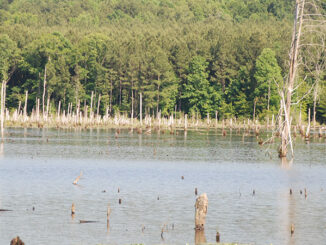
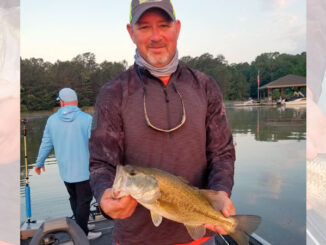
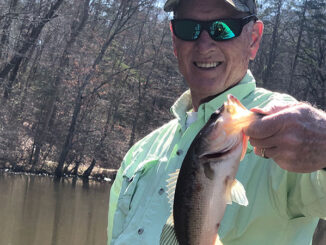

Be the first to comment